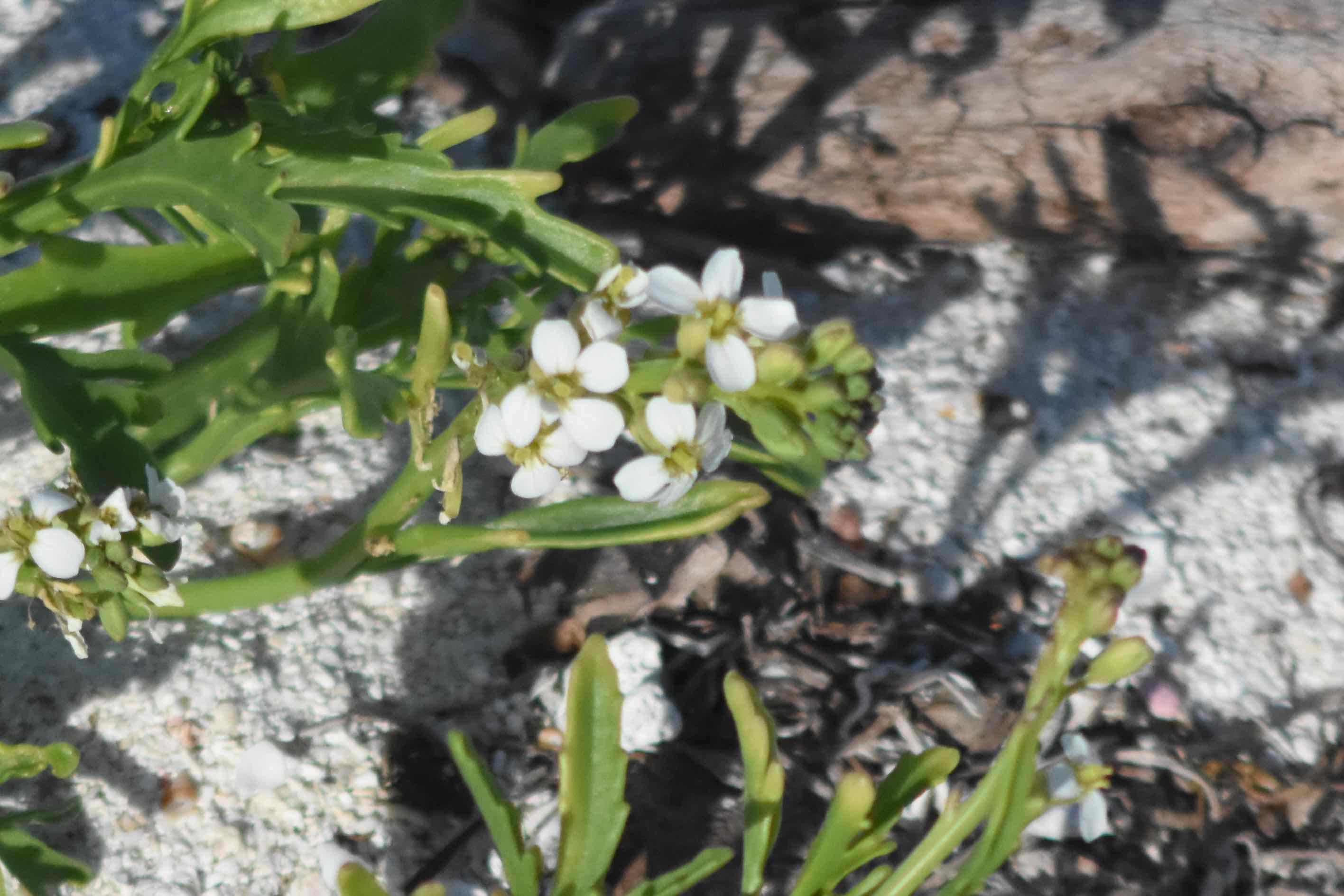
Coastal searocket, photographed at Garden Key, Dry Tortugas National Park, Monroe County, in April 2017.
Coastal searocket, Cakile lanceolata, gets its name from its rocket-shaped fruit. In one unusual way, it even works somewhat like a rocket.
It’s a Florida native, found in most coastal counties on both the Atlantic and Gulf sides of the state. The few exceptions where it’s not found are in the Big Bend area. Despite its broad distribution, the Institute for Regional Conservation considers it rare in South Florida.
Coastal searocket is also found in Alabama, Louisiana and Texas, according to the United States Department of Agriculture’s PLANTS database. Beyond the U.S., its range includes Bermuda, the Caribbean, Mexico, Central America and South America.
It’s an annual or short-lived perennial typically found in beach dunes, where it plays an important role in protecting dunes against surges from tropical storms and even hurricanes. It grows to two to three feet tall and just as wide.
The leaves are lance shaped, long and relatively narrow, and on the fleshy side. The edges, or margins, can vary from smooth, or complete as botanists would say, to toothed, or serrated.
We’ve seen various reports on when coastal searocket blooms; some say winter into summer; others summer into fall. The difference could be due to geography, the former timetable in more southerly places, the latter more northerly. But that’s just our guess; the photographs on this page were taken in April in the Dry Tortugas.
The flowers themselves are small, with four petals each and yellow anthers. They can vary in color from white to lavender to pink. As we said before, the fruit capsule is rocket-shaped, inspiring the name. You might say this rocket-like fruit even has two stages to it. Each fruit has two seeds in it, one in the top portion, one in the bottom. The top separates from the bottom part of the fruit, allowing the seed inside to be carried off by wind or water, while the bottom portion with its seed remains with the plant.
Coastal searocket is a tough plant as might be expected given where it grows. It takes to nutrient-poor, well-drained sandy soils. It’s highly drought-resistant once it’s established. It grows in full sun.
Coastal searocket tolerates a fair amount of salt spray and salt wind and can tolerate some short-term flooding from salt water.
According to the Florida Wildflower Foundation, both the leaves and stems are edible, cooked or raw, and tastes peppery or like mustard, not surprising since it is a member of Brassicaceae, the mustard family. Some say coastal searocket has a turnip flavor as well. The boiled leaves can be used to clean wounds.
Another common name for the plant: gulf searocket.
Garden Key, Dry Tortugas National Park



